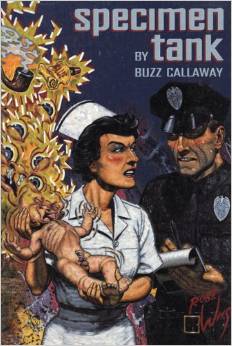POSITIONS WITH WHITE ROSES
Positions with White Roses, by Ursule Molinaro is one of the best books I’ve read all year. (for profiles go here and here; the second link is to a site reviewing her books, scroll down to Bruce Benderson’s memoir of his friend). Molinaro’s style is austere and her imagination tends to formal arrangements. The novel is in the shape of a cross: it occurs at a dinner table, a long, grey marble table, with a bouquet of white roses in the center. A mother sits at one end, and a father sits at the other. In the middle, on either side, are two seats for their two daughters. Only one of these seats is filled, by the “visiting, normal daughter”. This daughter, the visiting normal one, is 30. Her sister, Laura,a fraternal twin, is not visiting. The two sisters are opposites: Laura has a severe curvature of the spine, which required frequent, frightening surgeries when she was a small child. She also has fragile legs that easily break. She is nonetheless extraordinarily beautiful, focused and accomplished. Unlike the visiting, normal daughter, she is a lawyer, with a practice in LA, of all female lawyers. The visiting normal daughter is not beautiful, but very plain looking. She couldn’t complete college. She is an artist, a bohemian vagabond, and bi-sexual. As young women, the visiting, normal daughter uses her beautiful and disfigured sister to attract men, whom she seduces. This dynamic plays out in the book, as both sisters go Portugal, and the visiting normal one becomes involved with a gay Parisian, while painting murals in a former monastery retooled as an aristocratic retreat for gay sadomasochists.
The parents are Italian immigrants, Jews who escape Italy during the war. The mother was a successful fashion designer from a family of artists. The father was a doctor. In America he is an undertaker. The parents are alienated from each other and they are no longer speaking, so the few dinners the visiting, normal daughter attends (she is home for Christmas, after a 12 year absence) are tense and silent. The narrative shifts in perspective between mother, father and visiting, normal daughter. Laura’s absence as a narrator is notable and her story is told by others.
It is a taut narrative. Molinaro’s sentences are crisp and minimal and she has a way of completing or extending the thought of one sentence with the next one. It is a brilliant device, handled expertly, and creates a propulsive narrative. Molinaro’s perspective is detached, severe and analytical, but it is a pleasure to read this book. The layout of the text itself reflects the structure of a cross, as periodically paragraphs have narrow margins.
It is surprising how much detail she fits into such a short book. Molinaro was an eccentric figure. She was a translator, wrote plays, short stories, novels and was also an artist. She came to the US in the late forties from Europe, and wrote exclusively in English thereafter. She started The Chelsea Review, gave private writing lessons and published her books with small presses, including The Fiction Collective. She was secretive, a classicist who believed in the occult and wrote a book about numerology, had young lovers of any gender, and didn’t suffer fools. The picture here is the only one I can find. She looks a bit like the creature from the black lagoon, I know. the weird thing is, I lived around the corner from her for 10 years, and don’t remember seeing an older woman in a hat with goggle sized glasses, but who would’ve noticed then?
This book is an example of rigorously experimental fiction that is focused on story and character. There is nothing obscure or difficult about it, but it is emotionally and intellectually intense. Every sentence is packed with intelligence and the aesthetic never fails.





Sounds excellent. Thanks for the great review.